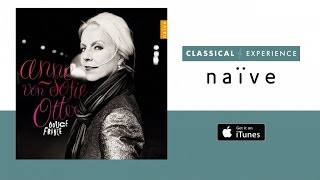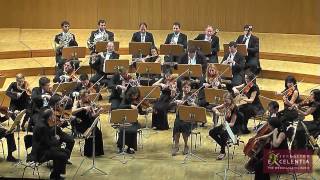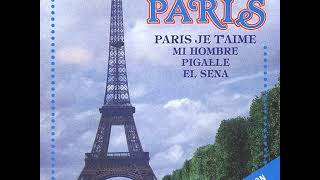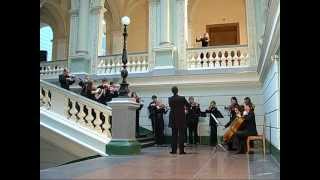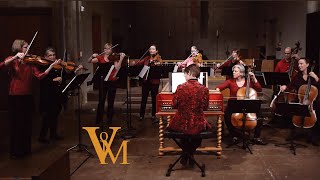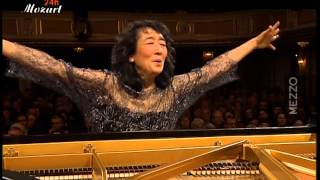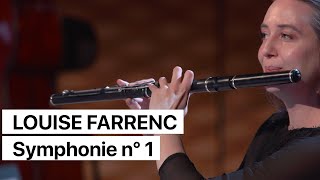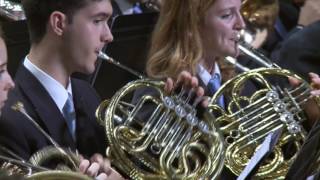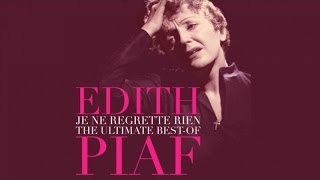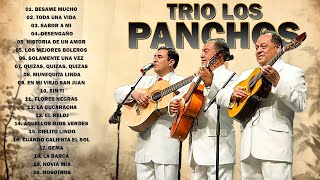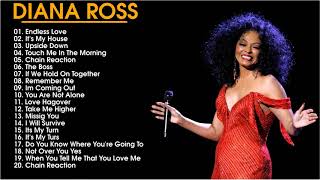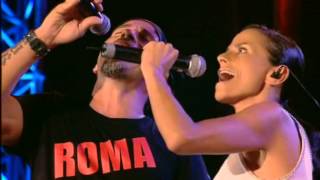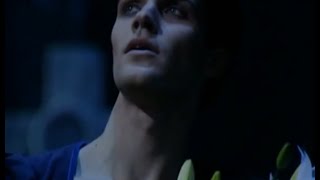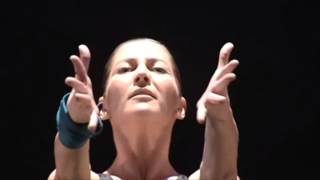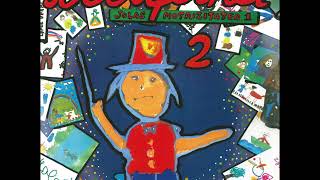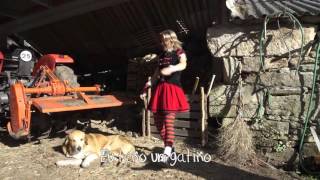July 14th is France's National Day.
Recommended music videos for initiation to classical music
The Feast of the Bastille of France , celebrated on 14 July, is a public holiday in France . It was instituted in 1880 by the Raspail law , without specifying whether it commemorated the storming of the Bastille on 14 July 1789, symbolizing the end of the absolute monarchy, or the Feast of the Federation on the same day in 1790, symbolizing the unification of the French nation. The second commemoration was intended to gain the support of moderate republicans for whom the storming of the Bastille was too violent an event.
Anne Sofie von Otter (1955) is a mezzo-soprano born into a Swedish aristocratic family. She made her debut at London's Covent Garden in 1985, at La Scala in Milan in 1987, and a year later at the Metropolitan Opera in New York . She has achieved notable success in various roles in works by Mozart, Handel, Richard Strauss , and Monteverdi , although in recent years she has ventured into mezzo-soprano roles from Wagnerian literature . As a recital soloist, she is an exceptional exponent of Mahler, Brahms, Grieg, Wolf, Richard Strauss, Antonín Dvořák, Schubert, Schumann, Alban Berg, Benjamin Britten, Reynaldo Hahn, Kurt Weill, and Erich Korngold. In 2003, she was awarded the Schock Prize , awarded by a committee of the Royal Swedish Academy of Music. She is a member of the Royal Swedish Academy . In 2012, she won the Swedish Academy's Grammis Award and was awarded the French government's Ordre des Arts et des Lettres . In recitals, she is often accompanied by Swedish pianist Bengt Forsberg , with whom she has maintained a professional relationship since 1990. In 2015, her album Douce France , featured here today, won the Grammy Award for Best Classical Vocal Solo .
Sweet France . 00:00 L'heure exquise 02:32 Le plus beau présent 04:31 Clair de lune 05:55 Si vous n'avez rien à me dire 09:15 Vogue, vogue la galère 11:06 Quand je fus pris au pavillon 12:12 Puisque j'ai mis ma lèvre 16:01 23: Le secret 32:59 Three chansons de Bilitis: Le tombeau des Naïades 35:57 Four Poems for Voice, Viola and Piano, Op. 5: La cloche fêlée 44:19 Four Poems for Voice, Viola and Piano, Op. 5: Serenade 48:46 Danse Macabre Op. 53:57 Padam Padam 57:07 To Saint-Germain-des-Prés 01:00:42 Quel joli temps (September) 01:04:05 To Paris 01:07:18 Le facteur 01:11:28 Chanson des jumelles 01:14:33 Je vivrai sans toi 01:17:44 Les feuilles mortes 01:22:10 Douce France 01:25:34 Boom! 01:27:42 Le pont Mirabeau 01:30:36 La carte du tendre 01:33:43 Chanson d'Automne 01:35:59 La vie en rose 01:40:15 Que reste-t-il de nos amours 01:43:12 Parlez-moi d'amour
Juan Crisóstomo de Arriaga (1806 - 1826), known by many as the Basque Mozart , was born in Bilbao . His father, Juan Simón , came from Errigoiti , a town near Gernika , where his mother, Maria Rosa , was from. His father, an organist from Berriatua , Bizkaia , moved to Bilbao to, as a good Errigotiarra, dedicate himself to business, with which he prospered and thus was able to promote Juan Crisóstomo 's educational development in Paris , where he died 10 days before his 20th birthday. The musical legacy, which has been preserved, consists of three string quartets, the octet Nada y mucho , written at the age of 11, the Overture No. 1 , the Symphony in D, several arias and cantatas as well as some motets and an opera, Los esclavos felices , written at the age of thirteen of which only the overture is preserved, which we offer today.
An overture is the instrumental introduction to an opera or other dramatic work, musical or otherwise; although some independent instrumental compositions of the 19th and 20th centuries were also called overtures by their composers. The earliest operas, dating from the early 17th century , did not have overtures; instead, they did have an introduction by the vocalists, summarizing the action that was to follow. Instrumental introductions came into common use from the mid- 17th century ; the German composer Christoph Willibald Gluck was one of the first to use material from his operas for overtures. In this way, the overtures established the emotional tone of the opera that followed.
The composition of the Happy Slaves Overture follows the French model, consisting of two parts: a brief, slow, ternary rhythm introductory part, and a faster, more developed second part. It is performed by the Santa Cecilia Classical Orchestra, conducted from the stand of its concertmaster, Florian Donderer .
The accordion is a harmonic wind musical instrument consisting of a bellows, a tuning fork, and two wooden sound boxes. The bellows are closed at both ends by the wooden boxes. The right-hand side of the accordion also has a fingerboard with a key arrangement that can be piano-like ( piano accordion ) or round keys (also called buttons ); the left-hand side has buttons on both types of accordion for playing bass and accompaniment chords.
Today, with the help of Jean Freber and his accordion, we approach the depths of Paris in the last century.
Henry Mancini (1924-1994) was an American composer, conductor, arranger, pianist and flautist of film , jazz and Latin-influenced music. He is especially noted for his work in film and television. He is frequently cited as one of the greatest composers in the history of cinema, winner of four Academy Awards ( Oscars ), a Golden Globe and twenty Grammys , as well as a posthumous Grammy for his lifetime achievement in 1995. His most recognized works include the theme and soundtrack for the television series Peter Gunn , the soundtrack for The Pink Panther (for which he won a Grammy ) and his collaborations on Blake Edwards' comedies, which feature the song Moon River (from Breakfast at Tiffany's , 1961), which we offer today.
" Moon River " is a composition by Henry Mancini that won the Academy Award for Best Original Song that year. It was written specifically for Audrey Hepburn for her role in Breakfast at Tiffany's , and the following year it won the Grammy Award for Record of the Year.
Today we offer it in a flute version accompanied by a string ensemble with Khrystyna Andrukhiv as soloist.
Recommended classical music videos
Johann Sebastian Bach (1685-1750) was a German violinist, organist, conductor, and composer. He was born in Eisenach into one of the most prominent musical families in history, with more than 30 famous composers. In 1703, he obtained his first job as court musician to the Prince of Arndtstadt and in 1707 moved to Mülhausen as organist, where he married his cousin Maria Barbara, with whom he had seven children. After his wife's death in 1720, he remarried after a year and a half to Maria Magdalena, with whom he would have another thirteen children. In 1723, he moved to Leipzig , where he would reside until his death at the age of 65. A prolific composer, he is considered one of the three greatest geniuses in the history of music, along with Mozart and Beethoven.
The Brandenburg Concertos are a collection of six concertos (Concertos 1, 2, 4 and 5, concertos grosso ; Nos. 3 and 6, orchestral concertos ) that Johann Sebastian Bach presented in 1721 to Christian Ludwig , Marquess of Brandenburg , and are something of a "crown jewel" of instrumental music not only by Bach but of the entire Baroque . Bach probably composed the concertos over several years while he was Kapellmeister in Köthen . Heinrich Besseler , the eminent German musicologist, has pointed out that the total number of performers required (excluding the First Concerto, which was rewritten for a special occasion) exactly matches the 17 players Bach had at his disposal in Köthen .
Brandenburg Concerto No. 3 in G major, BWV 1048. Bach dispenses with wind instruments to give sole prominence to the strings. I (0:0) ALLEGRO MODERATO. Constructed from rhythmic cells, the basis of the various melodic themes, worked contrapuntally. II (5:35) ADAGIO originally consists of only two chords, one at the beginning and one at the end, which form a Phrygian half-cadence; it is likely that these chords were intended to leave some free space for the performer to improvise. III (5:46) ALLEGRO The dance seems to take over the score, as if it were a suite beat. It is the only concerto movement by Bach to use a binary form of dance in two sections, in the style of the gigue .
Today we present the version offered by the American group Voices of Music
Wolfgang Amadeus Mozart (1756-1791) is considered one of the three giants of musical composition, along with Bach and Beethoven . A child prodigy born in Salzburg , he mastered the keyboard and violin at the age of six and began composing. His father, Leopold , exhibited him on exhausting tours of various European courts. A prolific composer (more than 600 works written from the age of five until his death), he cultivated all kinds of musical genres: piano works, chamber music, symphonies, concertante works, choral works, operas... each and every one of them, masterpieces of their genre. His operas The Magic Flute, Don Giovanni, Così fan Tutte, and The Marriage of Figaro are among the 10 most performed operas in the world. He died in Vienna at the age of 35.
Concerto for Piano and Orchestra No. 20, K. 466. The Concerto is divided into three movements: I (0:57) ALLEGRO. It is composed in sonata form and begins with the strings introducing a slow theme in minor mode; after 10 seconds the winds are added and at second 20 the timpani sound; then the strings add a second theme , joined by the oboes and bassoon; after 2 minutes the piano is added with its own theme. The development of this movement continues with variations of the introduced themes and ends with the orchestra repeating the initial ones. II (15:43) ROMANZA. ALLEGRO ASSAI. The second movement is a rondo made up of five parts in ABACA form and a coda . It begins with a piano solo playing a charming melody accompanied by the orchestra in the main key. Right at the middle of the movement (19:45), we find that the peace of the melody is replaced by a restless theme in its relative minor mode (G minor), contrasting with the spirit that had settled in the movement. But, once again (22:24), the tranquil melody returns and ends with a light and delicate ascending arpeggio, played almost as a murmur. III (24:39) RONDO: ALLEGRO ASSAI. It begins with a few notes from the solo piano that are immediately responded to in a furious manner by the orchestral section. A second melody appears in a restless succession of notes that generate a dark atmosphere. This atmosphere contrasts with the joyful character of the melody in F major . The theme then develops through various modulations until it reaches a brief repeat return that prepares the piano cadence, which in turn gives way to the final part, where the bright and happy melody develops in the winds, is taken up by the piano and gives way to a jubilant orchestral tutti .
Mitsuko Uchida (1948) is a Japanese pianist who has recorded a wide repertoire with several record labels, won numerous awards and honours (including Dame Commander of the Order of the British Empire ), and since 2013 has been Artistic Director of the Marlboro Music Festival and School ; she has also conducted several major orchestras.
Today she offers us WA Mozart's Piano Concerto No. 20 in D minor, K. 466, accompanied by the Camerata Salzburg , conducted by herself.
Louise Farrenc (1804–1875) was a French composer, pianist and teacher, who studied piano with Anne Soria , then with Antoine Reicha , a professor at the Conservatoire de Paris , who taught her music writing (harmony, counterpoint), and later with Ignaz Moscheles and Johann Nepomuk Hummel . Farrenc taught piano at the Conservatoire de Paris , where she eventually received the same salary as her male colleagues. She was supported by the best musicians of her time, such as the violinist Joseph Joachim , and was twice awarded the Chartier Prize from the Institut de France , intended to reward the best chamber music compositions, in 1861 and 1869. She died on 15 September 1875 and was buried in the Montparnasse Cemetery.
Symphony . The word derives from the Latin symphonĭa meaning consonance as opposed to diaphōnia meaning dissonance. In the Middle Ages the word symphony was used to describe instruments capable of producing more than one sound simultaneously and by the end of the 18th century the word had already acquired its current meaning: a work for orchestra consisting of several sections. The symphony reached its maturity with Beethoven . His symphonies usually had a first movement "Allegro" in sonata form (exposition-development-re-exposition sometimes with a short introduction), a slow second movement (sometimes in the form of a theme and variations ), a third movement in triple rhythm (usually a scherzo , before Beethoven the commonest were a minuet and trio ), ending with the fast fourth movement in rondo or sonata form.
Today we present Louise Farrenc 's First Symphony , structured in four movements: I (0:00) ANDANTE SOSTENUTO - ALLEGRO .-. II (12:00) ADAGIO CANTABILE .-. III (19:57) MINUETTO MODERATO .-. IV (24:49) ALLEGRO ASSAI; a performance by the Roco Orchestra conducted by American maestro Michelle Merrill .
Thomas Doss (born June 6, 1966, Linz) is an Austrian composer and conductor. His parents, both professional musicians, taught him to play the A and trombone from the age of 7. Thomas Doss wrote his first compositions at the age of 11. From 1980 he studied at the Bruckner Conservatory in his hometown, completing studies in instrumental pedagogy, trombone, composition and classical conducting. He pursued further studies at the Vienna University of Music , the Mozarteum in Salzburg and the Maastricht Conservatory . He also interned at the MGM Studios and Dick Groove College in Los Angeles . In 1988 he became conductor of the Vienna Chamber Orchestra ; from 1990 to 1993 he was chief conductor of the Quedlinburg State Orchestra . Since 1991, he has taught conducting and wind music arranging at the Upper Austrian State Music School and the University of Music in Linz . Since 2006, he has been the coordinator of the Upper Austrian ensemble conducting program. From 2001 to 2011, he was professor of ensemble conducting at the Vienna Conservatory ; he subsequently worked as professor of wind orchestra conducting at the Claudio Monteverdi Conservatory in Bolzano until 2016.
Today we offer his Symphony In Green (Symphony No. 2) performed by the Getafe Music Band (Madrid), conducted by maestro Francisco Aguado Martí .
Recommended music videos for all tastes
Édith Piaf (1915-1963) is the stage name of Édith Giovanna Gassion , one of the most famous French singers of the 20th century , to whom we owe numerous songs in the Francophone repertoire such as "La vie en rose", "Non, je ne regrette rien", "Hymne à l'amour", "Mon légionnaire", "La Foule" or "Milord", known worldwide. A prominent personality, Piaf inspired numerous composers and mentored young artists who achieved international fame. Édith Piaf also stood out as a film and theater actress, participating in numerous films and plays. In the 1950s, Édith , famous in many countries, became a kind of Parisian icon. The American public consecrated her in 1956 at Carnegie Hall in New York , to which she returned frequently.
Los Panchos (also known as Trio Los Panchos ) was an international romantic musical trio formed by Mexicans Chucho Navarro, Alfredo Gil and Puerto Rican Hernando Avilés in the 1940s in Mexico City . They are considered one of the best musical trios and one of the most influential groups of Latin American artists of all time, being popular all over the world. They have held concerts for over 70 years and have appeared in over 50 films. The creator of that great trio was Alfredo Gil ; Avilés met the duo Los Panchos , joined them and thus the trio was formed.
Diana Ross (1944) is an American singer and actress who rose to fame in the 1960s as part of the group The Supremes, establishing herself as a solo artist in 1970. She later played the lead role in the film Lady Sings the Blues, about the life of singer Billie Holiday , which earned her an Academy Award nomination for Best Actress. During the 1970s and 1980s, she became the most successful female artist of the pop era and also covered the film and television industries as well as Broadway theater. In 1993, she entered the Guinness Book of World Records as the most successful female artist of all time. Sales of her albums and singles have an estimated total of over 100 million copies. In 1976 she was named " Female Artist of the Century " by Billboard magazine.
Eros Ramazzotti (Cinecittà Est, Rome, October 28, 1963) is a renowned figure in the music scene; also known for his nasal voice, which has been his hallmark throughout his career. He has managed to sell more than 65 million records worldwide, making him the best-selling Italian male artist in the history of his country and along with his compatriots Laura Pausini, Andrea Bocelli, Umberto Tozzi , as one of the most prominent Italian artists worldwide. He is part of the Nazionale Italiana Cantanti , a football team made up of Italian singers, of which he has been president and captain, playing as a forward. He is a well-known Juventus fan . His album " In every sense " contributed greatly to being recognized for his style and talent in Latin America .
Recommended peculiar videos
Adolphe Adam (1803-1856) was a French composer born in Paris and the author of a wealth of stage music. His first successes came in his adult years with the ballet Giselle and the opera Si j'étais roi ; by then he had already written several ballets and operas; in total he wrote 40 operas, 14 ballets and various cantatas, hymns, masses, choruses, piano pieces, pantomimes, military marches and plays. Of all these compositions, it is worth highlighting, in addition to those already mentioned, the Christmas carol Cantique de Noël, world-famous, in its English translation as O Holy Night. and the ballet Le Corsaire. From 1849 until his death in 1856 he was professor of composition at the Paris Conservatoire .
Giselle is a ballet in two acts with music by Adolphe Adam , choreography by Jules Perrot and Jean Coralli and libretto by Théophile Gautier and Jules-Henri Vernoy, based on the play De l'Allemagne (1835) by Heinrich Heine . Giselle is a peasant girl of great beauty and extreme innocence; deceived and betrayed, she falls into a despair that will drag her towards madness and death. Giselle is one of the masterpieces of ballet blanc , a ballet scene in which all the members of the corps de ballet appear dressed in white. Since the times of Romantic ballet, these ballet blanc scenes have been populated by ghosts, dryads, sylphs, fairies or similar creatures.
Today we present the complete ballet performed by Svetlana Zakharova and Roberto Bolle in the main roles, accompanied by the Corps de Ballet of the Teatro alla Scala in Milan .
The Pericón is a folk dance native to Uruguay, Argentina, Chile and Paraguay , danced by a group of couples. Regarding its origin, there are authors such as Carlos Vega who claim that it evolved from the cielito (an evolved contradanza, which comes from the British "country dance" or "original contradanza", which arrived in Argentina around 1730, and in turn is the direct ancestor of all existing contradanzas); while others, such as Cédar Viglietti or Mirta Amarilla Capi , claim that both the cielito and the pericón have their origin directly in the European contradanza. On the other hand, while some authors, such as Carlos Vega , place its birth in present-day Argentina , others maintain that it would have originated in lands of present-day Uruguay .
The Malambo is a traditional Argentine folk dance, belonging to the so-called southern or southern music. It originated in the Pampas around 1600. Among Argentine folk dances, it is an exception because it lacks lyrics; the music of a legüero bass drum and guitars (sometimes just the bass drum) accompany this dance, performed exclusively by men. There are no rules for performing a zapateo. Each combination of basic movements is unique and depends on the originality of the gaucho performing it. The zapateos are separated from each other by a foot tap called "repique," which contains a quick, distinctive sound that indicates the end of one zapateo and the beginning of another.
Today we offer both dances, the pericón with its slow, almost ballroom-like rhythm followed by the contrasting zapateado of the malambo (5'), in the original version by the National Folkloric Ballet of Argentina .
Flamenco is a musical expression native to Andalusia and some of the neighboring regions such as Extremadura and Murcia . Its origins appear to be a blend of Andalusian popular culture with expressions of the Romani people, as well as elements of Castilian romances, Moorish music, and Sephardic songs. We can say that flamenco was already being performed in the 18th century , but it has evolved to this day, continuing to do so like any living being. Its three main facets are cante (the act of singing performed by the singer), toque (typical of guitar players), and baile (characteristic of bailaor@s).
Sara Baras is a Spanish dancer, choreographer and director of her own dance company. She was born in San Fernando, Cadiz , in 1971, where she began her dance studies at her mother Concha Baras 's school. Shortly after, she joined the group Los Niños de la Tertulia Flamenca , with which she toured flamenco festivals in Barcelona . At the age of 14, she joined Manuel Morao's Company and performed at the Alhambra Flamenco Theatre Festival in Granada . That same year, she won the First Prize “ Gente Joven ” from TVE . In 1991, with this company, she performed for two months at the Eduard VII Theatre in Paris . In 1993, she won the “ Madroño Flamenco” award in Montellano, Seville, for being considered the most outstanding artist of the year. In 1997, she presented her own company, closing the XXXVII National Festival of Cante de las Minas . In 2003, she won the National Dance Award . In 2005, she continued her Sueños tour in Europe, the USA, South America, and Asia.
Dabke . One of the most important artistic expressions among Arabs is dance, of which dabke is the most characteristic. It is accompanied by complex choreography, group dancing, stamping (or dabke), clapping, and shouting.
Dabke is the folk dance of Palestine, Lebanon, Syria, Iraq, and Jordan . It is traditionally performed during the spring rainy season and at weddings during harvest season. Dabke is a youthful dance that requires energy and strength. It is performed in a semicircle, usually with between 6 and 15 dancers. Sometimes there is a leader among them, called " Al-lawah ," who must be a graceful and charming person. Dabke is a dance in which the participants, men and women, line up and perform the steps indicated by the leader, who stands at the head. It involves a game of steps, footwork, and jumping, with the dancers alternately standing apart, holding hands or shoulders. This dance is accompanied by clapping, shouting, and complicated steps, intended to represent important life events such as birth, marriage, and so on.
Recommended music videos for children
Various Wikipedia articles have been used to write these texts.
The texts of Videomusicalis are written in Basque, Spanish and English.





